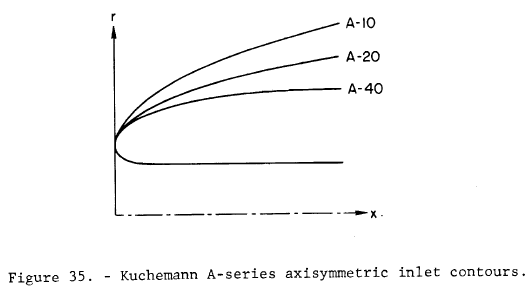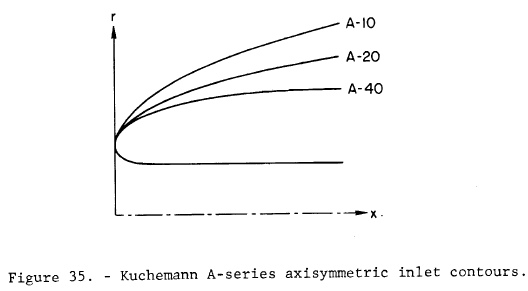Seems likely; I don't recall seeing a
CR3485 referenced anywhere, either.
On 6/30/2021 4:42 PM, Finn Lassen
finn.lassen@verizon.net wrote:
I tried in vain to find
NASA_CR3485
(well, I found a NASA contractors report on animal
studies).
I wonder of he meant 3405?

Anyone found a better match?
Finn
On 4/28/2011 9:07 AM, Tracy wrote:
Finally
got around to finishing my cooling inlets. (pictures
attached)� Up until now they were simply round pipes
sticking out of the cowl.�� The pipes are still there
but they have properly shaped bellmouths on them.��
The shape and contours were derived from a NASA contractor
report (NASA_CR3485) that you can find via Google.� Lots
of math & formulas in it but I just copied the best
performing inlet picture of the contour.�� Apparently
there is an optimum radius for the inner and outer lip of
the inlet.�� There was no change to the inlet
diameters of 5.25" on water cooler and 4.75" on oil
cooler.
The simple pipes performed adequately in level flight at
moderate cruise settings even on hot days but oil temps
would quickly hit redline at high power level flight and
in climb.�
The significant change with the new inlet shape is that
they appear to capture off-axis air flow� (like in climb
and swirling flow� induced by prop at high power)�
MUCH better than the simple pipes. �� First flight
test was on a 94 deg. F day and I could not get the oil
temp above 200 degrees in a max power climb. �� They
may have gone higher if the air temperature remained
constant but at 3500 fpm the rapidly decreasing OAT kept
the temps well under redline (210 deg F).
I have an air pressure instrument reading the pressure in
front of the oil cooler and was amazed at the pressure
recovered from the prop wash.� At 130 MPH the pressure
would almost double when the throttle was advanced to WOT.
� That did not happen nearly as much with the simple
pipes.��
These inlets ROCK!
Tracy Crook

bnmfmdnlndmefidc.png